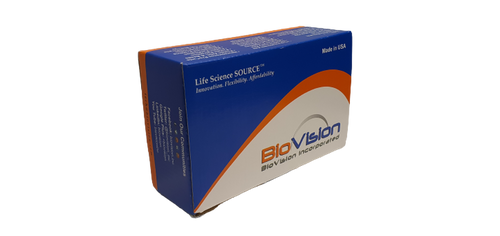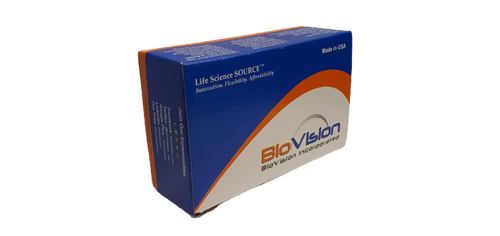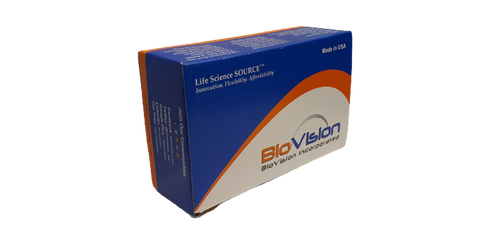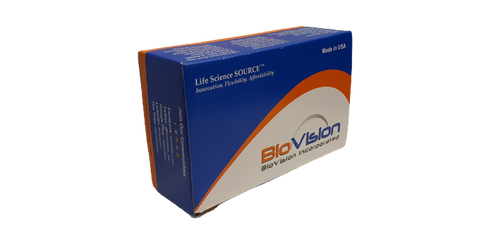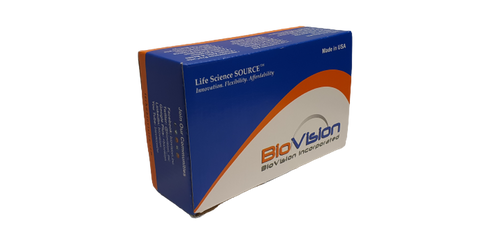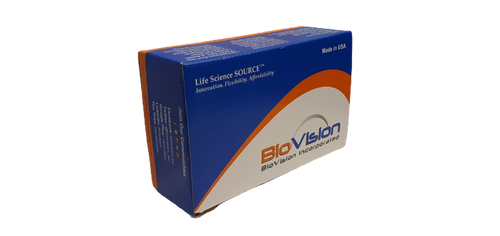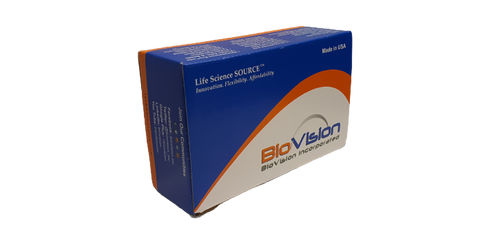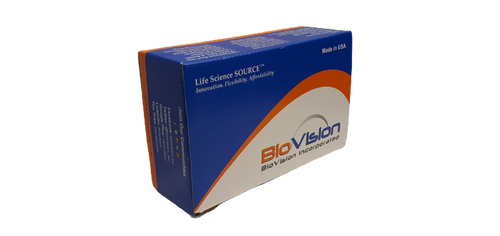Product Description
Biovision | K2015 | c-Src Kinase Inhibitor Screening Kit DataSheet
Cellular Src Kinase (c-Src, EC 2.7.10.2) is a non-receptor tyrosine kinase that regulates a wide array of cellular signal transduction pathways by phosphorylation of specific tyrosine residues in other tyrosine kinases. Src kinase family members interact with many proteins such as receptor tyrosine kinases, GPCRs, ion channels, steroid receptors, transcription activators, solute transporters and transmembrane adhesion receptors. c-Src was the first “proto-oncogene” to be identified. Over-expression of wild type c-Src or expression of a constitutively active mutant form is frequently found in a number of different cancers. Activation of c-Src enhances angiogenesis, proliferation and invasion pathways in tumors. The extent of this activation typically correlates with the malignant potential and patient survival. Despite the significant role of c-Src in oncogenesis, there are no known selective c-Src inhibitors. A number of clinically used tyrosine kinase inhibitors are capable of inhibiting c-Src. However, the currently available drugs are not selective and inhibit multiple kinases. Selective c-Src inhibitors may be more efficacious and can exhibit fewer side effects than the promiscuous multi-kinase inhibitors. BioVision’s c-Src Kinase Inhibitor Screening Kit enables rapid screening of test compounds for modulation of c-Src activity. The assay uses a c-Src-specific polypeptide substrate and a high concentration of the ultra-pure ATP that closely reflects the physiological ATP levels. ADP formation during the kinase reaction is measured. The strong and stable fluorescence signal (Ex/Em = 535/587 nm) generated during the reaction is directly proportional to the amount of ADP generated. This ensures a high signal-to-background ratio and a little interference due to short wavelength fluorescence by test compounds. The assay is simple, highly sensitive and is high-throughput adaptable. The kit contains a complete set of reagents sufficient for performing 100 reactions in a 96-well plate format.
Alternate Name : c-Src, Src Kinase, c Src Kinase Inhibitor Screening Kit, Src Inhibitor Screening Kit, Src Kinase Inhibitor Screening Kit, c-Src Kinase Inhibitor Screening Kit, c-Src Kinase Inhibitor Screening, Src Kinase Inhibitor Screening, cSrc Kinase Inhibitor Screening Kit, Src Kinase Inhibitor Kit, Src Kinase Inhibitor Kit, c-Src Kinase Inhibitor Kit, c-Src Kinase
Tag Line : for rapid screening of test compounds for modulation of c-Src activity
Summary : Cellular Src Kinase (c-Src, EC 2.7.10.2) is a non-receptor tyrosine kinase that regulates a wide array of cellular signal transduction pathways by phosphorylation of specific tyrosine residues in other tyrosine kinases. Src kinase family members interact with many proteins such as receptor tyrosine kinases, GPCRs, ion channels, steroid receptors, transcription activators, solute transporters and transmembrane adhesion receptors. c-Src was the first “proto-oncogene” to be identified. Over-expression of wild type c-Src or expression of a constitutively active mutant form is frequently found in a number of different cancers. Activation of c-Src enhances angiogenesis, proliferation and invasion pathways in tumors. The extent of this activation typically correlates with the malignant potential and patient survival. Despite the significant role of c-Src in oncogenesis, there are no known selective c-Src inhibitors. A number of clinically used tyrosine kinase inhibitors are capable of inhibiting c-Src. However, the currently available drugs are not selective and inhibit multiple kinases. Selective c-Src inhibitors may be more efficacious and can exhibit fewer side effects than the promiscuous multi-kinase inhibitors. BioVision’s c-Src Kinase Inhibitor Screening Kit enables rapid screening of test compounds for modulation of c-Src activity. The assay uses a c-Src-specific polypeptide substrate and a high concentration of the ultra-pure ATP that closely reflects the physiological ATP levels. ADP formation during the kinase reaction is measured. The strong and stable fluorescence signal (Ex/Em = 535/587 nm) generated during the reaction is directly proportional to the amount of ADP generated. This ensures a high signal-to-background ratio and a little interference due to short wavelength fluorescence by test compounds. The assay is simple, highly sensitive and is high-throughput adaptable. The kit contains a complete set of reagents sufficient for performing 100 reactions in a 96-well plate format.
Detection Method : Fluorescence (Ex/Em = 538/587 nm)
Sample Type : Test Compounds
Species Reactivity : Mammalian
Applications : Screening and characterization of drugs and novel chemical entities for inhibition or modulation of c-Src activity., Development of structure-activity relationship models to predict Src kinase selectivity of compounds.
Features and Benefits : Simple, Rapid screening of test compounds for modulation of c-Src activity, High-throughput adaptable, Highly sensitive
 Euro
Euro
 USD
USD
 British Pound
British Pound
 NULL
NULL



